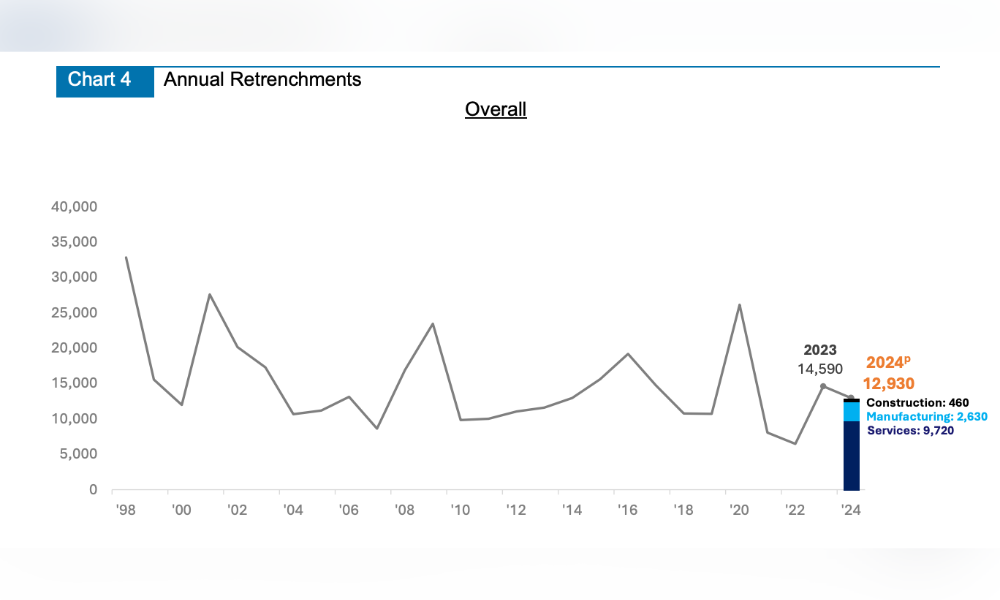
Which sector has the highest number of non-residents?

About 2,680 non-resident employees in Singapore were retrenched annually between 2021 and 2023, according to the Ministry of Manpower (MOM).
MOM made the remarks after an inquiry over the number of migrant workers that have been retrenched in the country since 2021.
In its answer, MOM said it only collects data on retrenched employees based on their residential status, not by their work-pass type.
"From 2021 to 2023, an average of about 2,680 non-resident employees were retrenched each year," it said. "The majority of these employees worked in Electronics Manufacturing, Information & Communications, and Wholesale Trade."
According to MOM, around nine in 10 eligible employees who got laid off received retrenchment benefits.
Singapore's Tripartite Advisory for Managing Excess Manpower and Responsible Retrenchment recommends the practice of retrenchment to be used as a last resort for employers.
"In this way, employers will retain their core capabilities, inspire loyalty in their workforce, and be well-positioned to emerge stronger in the recovery," it said on the advisory.
According to the advisory, retrenchment exercises should be carried out in a "responsible and sensitive manner."
"Retrenchment is a difficult time for all, especially for the affected employees and their families," it read. "It is important that employees are treated with respect in any retrenchment exercise."
In 2024, the overall retrenchment numbers reached 12,930, down from the 14,590 a year prior, according to the ministry's Labour Market Advance Release.
The incidence of retrenchment also declined to 5.8 retrenched per 1,000 employees in 2024, lower than the 6.7 in 2023.

Source: Labour Market Advance Release
"Throughout 2024, business reorganisation/restructuring remained the primary reason for retrenchments, rather than sectoral downturns or business closures," the release read.